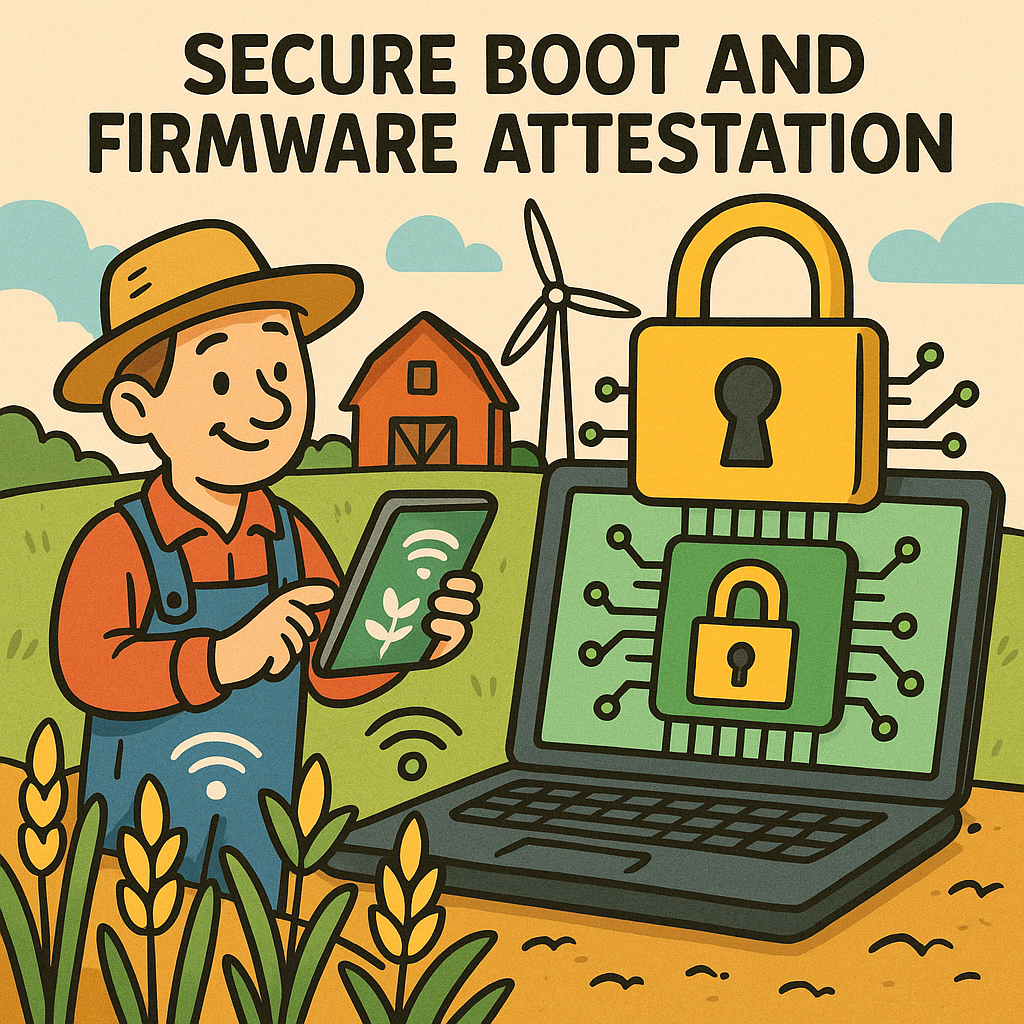Understanding Secure Boot in Edge Devices
In the realm of smart agriculture IoT systems, edge devices play a pivotal role in collecting and processing data efficiently. However, as these devices become increasingly interconnected, the need for robust security measures like Secure Boot has never been more critical. Secure Boot ensures that only trusted firmware is allowed to run on a device during the boot process, acting as the first line of defense against unauthorized access and malicious attacks.
The Mechanics of Secure Boot
At its core, Secure Boot leverages cryptographic techniques to authenticate firmware. When the device boots, it verifies the digital signature of the firmware against a pre-stored public key in a secure hardware module, such as a Trusted Platform Module (TPM) or a secure element. If the signature is valid, the firmware is loaded; if not, the boot process is halted, preventing potentially harmful code from executing.
Implementing Secure Boot requires careful consideration of hardware capabilities. For instance, using a TPM offers a robust security foundation, but it can increase costs and complexity. Alternatively, some developers might opt for software-based solutions, which, while cheaper, may not provide the same level of assurance against sophisticated attacks. This decision hinges on the specific threat model of the application—agricultural environments can expose devices to tampering while being relatively resource-constrained.
The Role of Firmware Attestation
Beyond Secure Boot, Firmware Attestation adds another layer of security by allowing devices to prove their integrity to external entities, such as a central monitoring system. This process typically involves generating a hash of the firmware and signing it with a private key stored securely within the device. The attestation server can then verify this signature, confirming that the device is running trusted firmware.
Challenges in Implementing Firmware Attestation
One of the significant challenges lies in ensuring that attestation is both secure and efficient. For edge devices in smart agriculture, which may have limited computational resources, the overhead of cryptographic operations can impact performance. To mitigate this, many engineers adopt a hybrid approach that balances security with resource constraints. For example, offloading some attestation responsibilities to a more powerful gateway device can help alleviate the burden on individual edge devices.
Additionally, the management of cryptographic keys presents another hurdle. Key provisioning must be done securely during manufacturing or deployment to prevent interception by malicious actors. Solutions like hardware-based key storage or remote provisioning systems can help, but they introduce their own complexities, such as the need for a reliable initial trust anchor.
Design Trade-offs: Security vs. Usability
When designing secure boot and firmware attestation systems for edge devices, engineers often face the trade-off between security and usability. For instance, a highly secure system might require frequent firmware updates to maintain security against the latest threats, but this can lead to operational disruptions in a farming environment where uptime is crucial.
To balance these needs, developers are increasingly looking towards automated update mechanisms supplemented with robust rollback strategies. These allow devices to revert to a previous firmware version in case an update introduces instability, thereby ensuring that the system remains functional even when security policies are stringent.
Real-world Applications and Considerations
In practical scenarios, consider a fleet of sensors deployed across a large agricultural field. Each sensor collects soil moisture data and transmits it to a central system for analysis. If an attacker gains access to these sensors, they could manipulate data, leading to poor decision-making and financial losses.
By implementing Secure Boot and Firmware Attestation, each sensor can ensure that the firmware running on it is both authentic and untampered. This proactive approach not only secures the data integrity but also builds trust in the system, allowing farmers to rely on the insights generated by their IoT devices.
Looking Ahead: Evolving Security Paradigms
As smart agriculture continues to evolve, so too will the security challenges associated with it. The rapid development of edge computing, combined with the increasing sophistication of cyber threats, necessitates a continual reassessment of security measures. Future designs may incorporate more advanced machine learning techniques to predict and respond to potential threats dynamically.
Furthermore, as regulatory requirements become stricter, engineers must ensure that their designs not only meet current standards but are also adaptable to future changes. This adaptability will be essential for maintaining the integrity and reliability of smart agriculture IoT systems in the face of an ever-changing security landscape.



